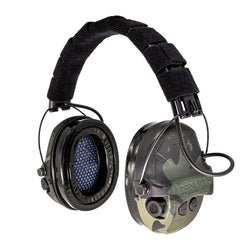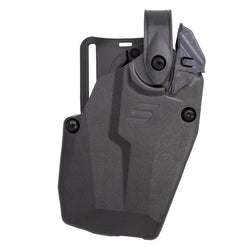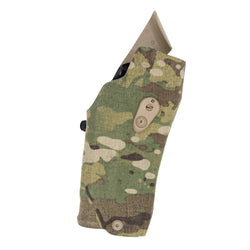You’ve probably heard of the acronym EDC. It stands for Everyday Carry, and though many people may automatically think this is about firearms, everyday carry items are things you take with you daily when heading out the door. In its most basic form, this will be your wallet, phone, and keys, but your EDC tools may also include a backpack, purse, or other storage device and all its contents. It also includes the items you carry on your person, like in your pockets, on your waistband, or otherwise worn on your body.
Some of these EDC items may be a flashlight, multitool, medical supplies, and a gun for self-defense. Even if you are new to the concept of EDC items, you probably already carry a few. There are other items, however, you may not have considered until now. It can be useful to have a few specific things on your person or in some type of bag. This not only applies to emergencies but to daily tasks as well.
With so many options it can be difficult to decide what brand, style, or type of tools to make part of your EDC. Here are some suggestions.

Knives
A knife is a popular item for people to carry, but there are many things to consider when selecting an EDC knife, including style, blade type, overall size, blade material, etc. How you plan to carry your knife will also affect the style and size you wish to use. Navigating the world of knives is one of the hardest things to do. Here are some things to consider when searching for a new EDC knife.
Before purchasing a knife, first, check your state and local laws for any restrictions. Some states may place restrictions on some knives like blade length or type (automatic/switchblade). Having a knife as part of your EDC is wise because it can be used in many instances. In a vehicle accident, a knife can be used to cut a seatbelt if needed. Cutting rope, string, opening boxes, and other daily tasks make pocket knives an essential tool for EDC.
Style: Folder, OTF, or Fixed
One of the first things to consider when selecting a knife is the style. A folding knife is the most popular because the blade folds into the body of the knife. This makes it smaller, easier to carry, and does not require a sheath because the blade is not exposed when folded. The next style is the OTF (out the front) knife which is typically automatic, or spring-assisted. When pushing forward on a button or lever, the blade protrudes from the top of the knife handle in a quick motion.

Fixed-blade knives can be found in many sizes with multiple blade types. A fixed-blade knife requires a sheath when wearing, which is not as easy to conceal. This type of knife is ideal for hunting, hiking, or even carrying in a backpack.
Blade Type
There are many blade types to choose from for both fixed and folding knives. This includes straight-back, serrated, Talon, and more. Choosing the type of blade for your knife is a personal preference to some degree. But you want to be mindful of what tasks you plan to do with it. A serrated blade for example is designed to be used in a back-and-forth motion like a saw. This may be ideal for hunters and hikers. There are also several types of tips to choose from on knives, some of which are made to puncture, like the pear-point, which is a common type used in throwing knives.
Other Features to Consider
When searching for a tactical/combat knife for EDC, you want to pay attention to the material the blade is made from. D2 steel, CPM Cru-Wear, and other types of steel provide a durable, strong blade. The difference between a standard pocketknife and a tactical knife is often the overall size, blade thickness, and locking feature on the blade. This style of knife is typically designed to be practical in multiple situations and is extremely rugged. An example of a tactical pocketknife is the Benchmade Mini-Adamas.
Lights
Having a light source as part of your EDC is important. Two common types of lights are defined by their purpose, handheld and weapon-mounted. Handheld lights range in size from micro (fits on a keychain) to duty size (like those used by police). Weapon-mounted lights are attached to a firearm and assist in low-light conditions when shooting. It’s important to have a weapon-mounted light on a CCW gun. This allows a clear picture of the threat during self-defense situations. But a weapon-mounted light should not be used as a regular light source, because it’s attached to a firearm.

Tactical vs EDC lights
What defines a “tactical” light is somewhat vague, depending on who you ask. One of the most important aspects of a tactical light is its multi-use capabilities. An example would be a weapon-mounted light that can also be removed quickly and used as a handheld light. Another would be a light that is large enough that it can double as a weapon during self-defense situations. This type of light must be made of a quality material that will not break easily.
Companies like Streamlight and Surefire are among the leading manufacturers of quality lights. An EDC light can also be a tactical light but is defined more by its size and purpose. Something you can fit in a pocket, bag, or purse, and carry daily would be considered an EDC light. The Streamlight Wedge XT is an example of a great EDC flashlight.

Is a Cell Phone an EDC Light?
While a modern cell phone provides a convenient source of light, it may not be wise to count on it for an EDC light. During an emergency, you may need your phone to call 911 or others, making the light inoperable. Also, because of their size and shape, cell phones are easier to drop than a dedicated flashlight. Having a quality EDC light for daily/emergency use is worth considering. They are often brighter than most cell phones and provide a wider coverage area of light.
Many flashlights also offer different positions for the power button. This allows you to change your grip on the light and still turn it off and on. Streamlight, for example, offers lights with dual power buttons, one on the side and one on the back of the light. Many lights have multiple brightness settings making it important to keep a finger near the power button while using.
EDC Tools
Having a few tools on you at all times is a lifesaver when you need something quickly. This does not have to be during emergencies only, but in everyday problems as well. Setting up an EDC tool kit depends greatly on your own personalized needs. This may change depending on where you live, what you do for a living, and where you travel. A tool “kit” could be a small pouch with various items, one multi-tool, or an entire backpack.
Multi-tools for EDC
Leatherman, Gerber, Real Avid, and others all make multi-tools that can be handy throughout the day. If you need to repair something quickly, these tools offer multiple options like a knife, screwdrivers, Allen wrenches, and more. Many multi-tools, however, are bulky, making them hard to carry on your person every day. This type of tool may work best in a backpack or vehicle. If you plan to carry individual tools like plyers, wire cutters, tweezers, etc. consider an EDC bag or pouch.

Options for EDC Bags
Setting up an EDC bag offers plenty of options because of the extra space. It’s important to find the right balance of size and weight you would be comfortable carrying around daily. EDC bags come in all shapes and sizes with options like sling bags (one strap) traditional backpacks, or shoulder bags. If you already have a bag for a different purpose, an EDC pouch can be attached to it. Companies like 5.11, Voodoo Tactical, Vertx, and Viktos offer plenty of sizes and styles for EDC bags.
EDC Guns
When considering what EDC items you wish to carry, identifying self-defense items is important. Many choose to carry a compact firearm for self-defense along with other EDC items. Companies like Glock, Smith & Wesson, Ruger, FN-USA, other others make excellent CCW guns for EDC. For those not comfortable carrying a firearm or living in areas with restrictions on carrying a firearm, there are still options. The type of knife you select can double as a self-defense weapon, and even the right flashlight if needed. The type of weapon you choose for EDC may depend on local and state laws, training, and personal preference.

Train with your EDC Items
You have a lot of options to consider when determining what type of EDC items you want. It may help to separate items into categories as you consider the best products for you. Self-defense, bags, lights, and other items can all be separated into different categories. Even a watch could be considered an EDC item, and plenty of watches have built-in tools to help with daily tasks. Whatever you choose, make sure it works for you and accomplishes the task intended. Train with your EDC tools so you are ready to use them when the time comes.









